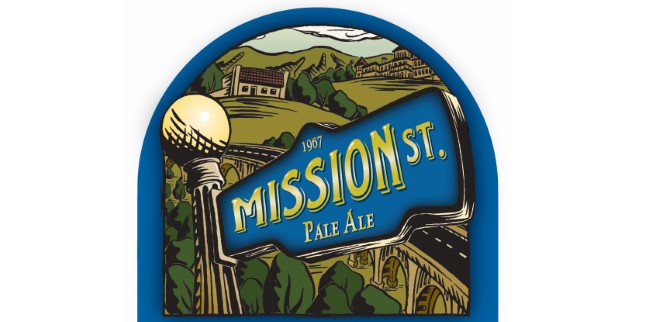Firestone Walker Pale 31: A Classic Pale Ale (Briefly) Back from the Dead
Photos via Firestone Walker
It’s a sad reality of the beer market that critical acclaim and competition medals often mean little for mass marketability and sales figures. Consumers, by and large, aren’t looking up which brewery’s pale ale has been draped with the most awards over the years when they’re making buying decisions. Hell, getting them to appreciate a style like pale ale at all is a constant battle for brewers, in an era when so many breweries and consumers have entirely abandoned any sense of subtlety or proportion and just zeroed in on maximum bombast and over-the-top flavors. Why bother with a semi-balanced pale ale, they reason, when you can fully inundate your palate in wave after wave of juice and resin via this week’s newest triple dry-hopped IPA? This has been the way of things for years now, and was no doubt at the heart of the decision that California’s Firestone Walker Brewing Co. made in 2018 when they discontinued their classic Firestone Walker Pale 31. Perhaps prophetically, David Walker said this at the time: “Pale 31 has been put out to pasture simply because the American palate it helped awake has decided this style is not for them. Let’s hope they come full circle and we can dust off the spell book and create this beautiful creature once more.”
Five years later, Pale 31 is back, albeit in limited capacity as a feature for members of the company’s Brewmaster’s Collective subscription service. But even that is a potentially significant revival, a first step in what could hopefully be an acknowledgement that some appreciation for subtlety in craft beer could be returning. At the very least, it’s wonderful to taste the beer again after all these years, but it’s the story of Pale 31 that really caught my eye. This is a beer with several fascinating connections to Firestone’s storied history, and I was surprised to learn just how little I really knew about what was inside a can of Pale 31.
Firestone Walker Pale 31 is one of the company’s oldest recipes, standing right there alongside the stalwart Double Barrel Ale (DBA), another early flagship brand that has shrunk to being only a tiny fraction of the company’s modern business. It’s also the most awarded beer in FW’s history, with Pale 31 garnering double digit medals over the years at events such as the Great American Beer Festival and World Beer Cup. It makes its return now in the Brewmaster’s Collective thanks to fan requests, where it was one of the top three demands alongside black IPA Wookey Jack and the barrel-aged Double DBA.
Something I never knew, though? Pale 31 was never the product of a single brewing cycle–it has always been a blend of two different Firestone Walker beers. The heart of that blend is Mission St. Pale Ale–a name that may turn on a lightbulb for older craft beer geeks, because it was the brand that FW produced for many years as an in-house pale ale for the Trader Joe’s grocery chain. I fondly recall this era in the mid-2000s when a trip to TJ’s could yield some excellent value for the savvy beer geek who knew they were effectively getting Firestone Walker at a discount.
